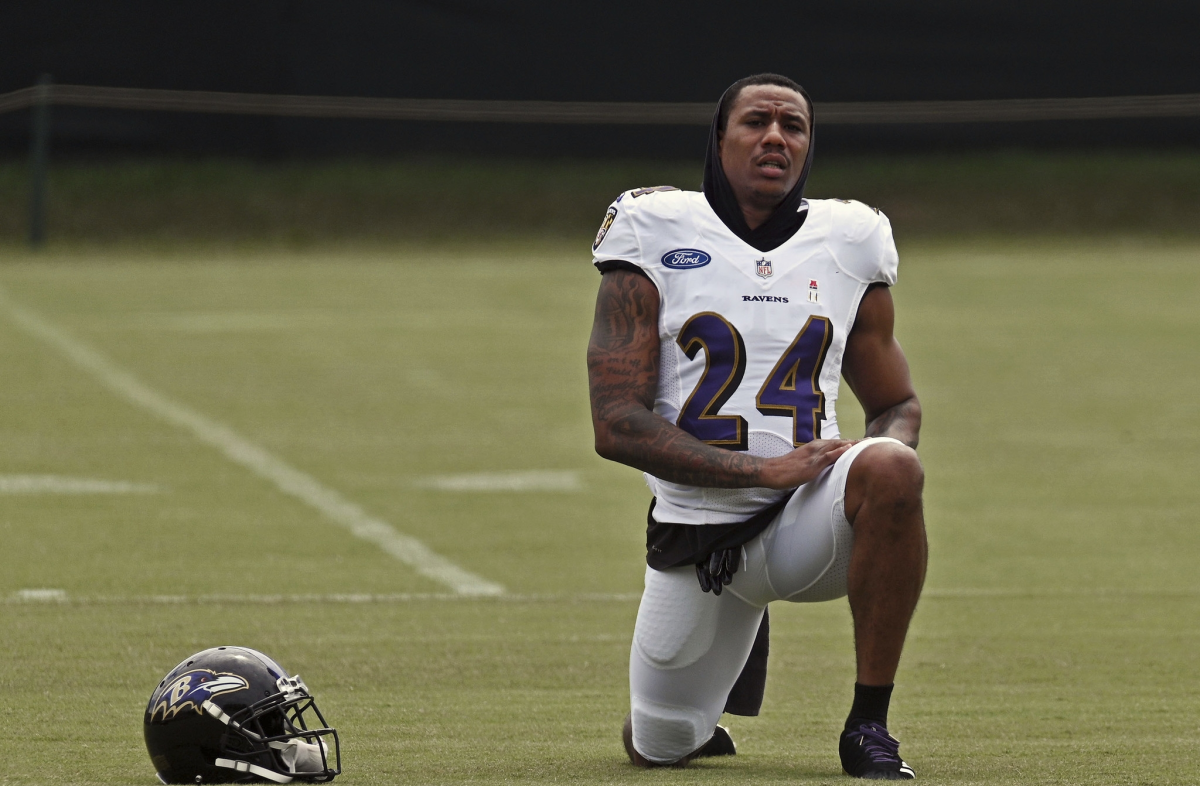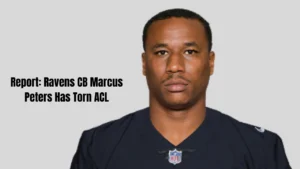
Overview of the Injury
The recent report indicating that Ravens cornerback Marcus Peters has sustained a torn ACL is a significant development for both report: ravens cb marcus peters has torn acl the player and the organization. This injury occurred during a practice session on a routine drill, where Peters reportedly experienced a sudden change in direction. The abrupt movement led to a noticeable stiffness followed by immediate discomfort, prompting medical staff to intervene. The decision to conduct further evaluations confirmed the initial suspicion of a torn anterior cruciate ligament.
An ACL tear is a common and serious injury among professional athletes, particularly in high-impact sports like football. This ligament plays a crucial role in stabilizing the knee joint, which is essential for activities involving quick pivots, jumps, and sprints. For a cornerback, the ability to maintain agility and stability is paramount for both individual performance and overall team defensive strategies. As a result, an ACL injury can have profound ramifications, hindering not only the athlete’s performance but also the overall effectiveness of the team’s gameplay.
Impact on the Ravens’ Defense
The recent report indicating that Ravens cornerback Marcus Peters has torn his ACL presents a significant challenge for the Baltimore Ravens’ defensive unit. As one of the pivotal players in the secondary, Peters has consistently demonstrated his ability to disrupt opposing offenses. Last season, he recorded 14 passes defended, alongside 3 interceptions, showcasing not only his ball-hawking skills but also his capacity to influence games through his presence on the field. This injury, unfortunately, poses a substantial gap in the Ravens’ defensive line-up and strategy.
Peters’ role extended beyond mere statistics; his experience and instinct played a critical role in the team’s overall defensive schemes. His ability to shadow top receivers and assist in run support made him a cornerstone of defensive coordinator Mike Macdonald’s system. With Peters sidelined, the Ravens must navigate questions regarding their secondary’s ability to maintain its effectiveness against formidable opponents. The loss of such a seasoned player not only affects individual matchups but also places additional pressure on the remaining cornerbacks to step up and compensate for his absence.
In the wake of this injury, players such as Marlon Humphrey and Brandon Stephens become crucial to the team’s plans. Humphrey, renowned for his physical style of play, has the potential to become a more prominent figure in opposing coverage schemes. Stephens, meanwhile, may be called upon to elevate his performance given the increased responsibilities. The coaching staff must also consider possible roster moves or tactical adjustments to address the coverage void left by Peters. The overall success of the Ravens’ defense in the coming games will depend heavily on how well these players adapt to their new roles and the cohesiveness of the defensive unit as a whole.
Recovery and Rehabilitation Process
The recovery timeline for an anterior cruciate ligament (ACL) tear, such as the injury sustained by Ravens cornerback Marcus Peters, generally spans across six to twelve months, depending on the severity of the tear and the individual’s commitment to rehabilitation. Following the injury, the initial phase involves reducing swelling and managing pain through rest, ice, compression, and elevation – often referred to as the RICE protocol. Once the acute phase passes and the medical team clears the athlete, rehabilitation commences in earnest.

The rehabilitation process typically begins with physical therapy aimed at regaining the range of motion and strengthening the muscles surrounding the knee. This phase is critical, as regaining full flexibility can significantly impact the overall recovery timeline. The therapist will usually progress the treatment to focus on strengthening exercises, which might include resistance training and specific exercises tailored to boost muscle endurance and balance.
An essential element of recovery is the athlete’s commitment and mental state throughout the process. Challenges may arise, such as emotional setbacks, physical discomfort, or the fear of re-injury. Consequently, psychological support and counseling may play a role alongside physical rehabilitation. For Peters, maintaining communication with coaches and trainers about his feelings during recovery may aid in managing these obstacles.
Professional athletes typically aim for a return to play after undergoing ACL reconstruction, but they must demonstrate adequate strength and movement, plus clearance from healthcare professionals. For Peters, evaluations will determine his readiness, focusing on his ability to perform sport-specific drills before rejoining team activities. Understanding and adhering to the rehabilitation advice provided by his healthcare team will be paramount in ensuring a successful comeback to competitive football following this traumatic injury.
Future Implications for Marcus Peters and the Ravens
The recent report indicating that Ravens cornerback Marcus Peters has suffered a torn ACL raises significant concerns regarding both the player’s future and the overall dynamics of the team. Injuries of this nature are notorious for altering a player’s career trajectory, and Peters, already a crucial component of the Ravens’ defensive lineup, will now face a challenging road to recovery. Historically, NFL players who have sustained a torn ACL often experience varying degrees of success in returning to their pre-injury performance levels. While some athletes, like Adrian Peterson, have defied expectations and returned to elite status, others have struggled to regain their previous form.
Peters’ contract situation further complicates matters. With his current deal set to expire in the coming seasons, the Ravens organization will need to reassess their plans regarding his future in the team. The financial implications of signing or extending a contract often weigh heavily on teams, particularly when a player’s health is in question. Should Peters demonstrate resilience and recover successfully, he may attract interest from other franchises, which could put the Ravens in a position where they must decide whether to invest in his future or seek alternative options to bolster their roster.
The Ravens’ depth chart will also inevitably shift following Peters’ injury. His absence opens up opportunities for less experienced players to step up and fill his role, but it also introduces uncertainty into the team’s defensive strategies. The coaching staff will have to adapt and possibly make whole-scale adjustments to maintain competitive performance levels. Thus, the implications of the report: Ravens CB Marcus Peters has torn ACL extend far beyond individual impact, influencing team dynamics and future planning significantly.